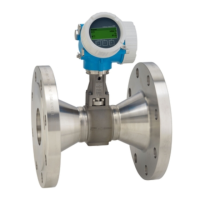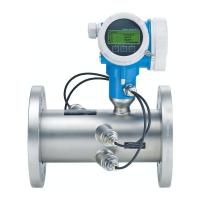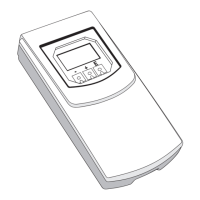Proline Prowirl F 200 PROFIBUS PA Technical data
Endress+Hauser 189
Flow velocity
A0027507
E DN diameter
v
E
Velocity in process pipe
v Bluff body approaching flow velocity (Re is based on this)
v2 Maximum velocity (applies only to oxygen) v
2
= v
max
v
3
Velocity when leaving the measuring device
D
i
Internal diameter D
i
= D
3
D3 Internal diameter D
3
= D
i
d Width of bluff body
f Vortex shedding frequency
The Applicator can be used for calculation purposes. → 182
Maximum volume flow Strouhal number Reynolds number
A0027504
A0027505
A0027506
Lower range value
Depends on the density of the medium and the Reynolds number (Re
min
= 5 000, Re
linear
=
20 000). The Reynolds number is dimensionless and indicates the ratio of the inertia force
of a fluid to its viscous force. It is used to characterize the flow. The Reynolds number is
calculated as follows:
Re
=
4 · Q · m³[m³/s] [kg/ ]ρ
di [m] · µπ π · [Pa·s]
Re
=
4 · Q · ³[ft³/s] [lb/ft ]ρ
di [ft] · µπ · [0.001 cP]
A0003794
Re = Reynolds number; Q = flow; di = internal diameter; µ = dynamic viscosity, ρ = density
v
DN ½...12" →
=
min.
4.92
ρ [lb/ft³]
[ft/s]
v
DN 15...300 → =
min.
6
ρ [kg/m³]
[m/s]
A0003239

